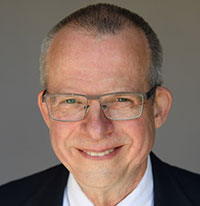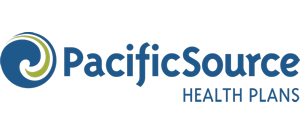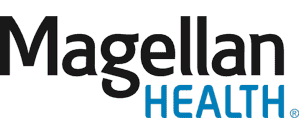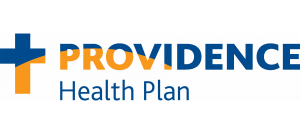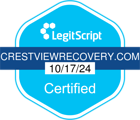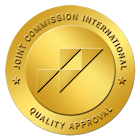While Portland, Oregon, is a city renowned for its vibrant culture, progressive ideals, and deep community roots, unfortunately, like so many other communities throughout the U.S., it is also one facing a drug crisis. In fact, in 2025, the city finds itself grappling with a dual epidemic: the rapid rise in opioid-related overdose deaths and a severe lack of access to effective, equitable addiction treatment.
The Portland, Oregon, drug crisis, driven largely by the deadly synthetic opioid fentanyl, is escalating at a staggering pace, overwhelming public health infrastructure, devastating economically vulnerable communities, and highlighting the long-standing racial and economic inequities that exist when it comes to healthcare access.
In this blog, we will explore the full scope of this crisis, including how fentanyl has changed the landscape of addiction in Portland, the communities most affected, and the urgent need for resources and treatment centers like Crestview Recovery. We’ll also highlight community-driven, equity-centered solutions that can turn the tide and save lives.
A City in Crisis: The Alarming Rise of Fentanyl in Portland
Like so many other regions and communities, fentanyl has quickly become the deadliest drug in Oregon’s history. Originally developed for pain management, fentanyl is up to 50 times stronger than heroin and 100 times more potent than morphine. While fentanyl can be dangerous enough on its own, even when taken as medically directed, it has also become a popular cutting agent for street drugs such as cocaine, also leading to an increase in overdose cases.
According to the Oregon-Idaho High Intensity Drug Trafficking Area (HIDTA) program, early 2025 has already seen multiple significant fentanyl busts in Portland, where traffickers were found carrying thousands of counterfeit pills intended for street sale, including one in February that saw 44 pounds of fentanyl powder and over 2500 fentanyl pills seized.
Unfortunately, this is nothing new for not just Portland but the state of Oregon as a whole. In 2023, Oregon reported more than 1,100 drug overdose deaths, with fentanyl accounting for the vast majority. By mid-2024, overdose fatalities had risen by an additional 20%, according to the Oregon Health Authority (OHA). And, at least as of now, there appears to be no end in sight with numbers expected to climb even higher due to the reappearance of ultra-potent analogs like carfentanil, which the OHA flagged in an October 2024 public health advisory.
Below are some additional facts and figures related to the drug crisis in Portland:
- Illicitly manufactured fentanyl was implicated in 65.5% of all overdose deaths in Oregon in 2022, marking it as the most prevalent illicit drug involved in such fatalities.
- Multnomah County, where Portland is located, saw 456 deaths, 251 of which were linked to fentanyl among its homeless and unhoused population in 2023.
The Human Toll: Individuals, Families, and Communities in Pain

While these overdose numbers are staggering enough on their own, it’s also important to remember that behind every overdose statistic is a life and a community that is forever changed. Addiction and death don’t just affect the person; they affect everyone around that person, including family, friends, coworkers, loved ones, and other members of the community with whom the person interacts. When a person dies of a drug overdose, the impacts can be far-reaching, causing ripple effects throughout the community, including crime, poverty, homelessness, and mental health crises.
Furthermore, the uptick in overdoses can also leave hospitals and medical facilities at max capacity, leading to a lack of resources for others in need of medical attention and care. While first responders carry naloxone (Narcan) as standard practice, often administering multiple doses per individual to reverse the effects of increasingly potent opioids, the supply of naloxone can’t always keep pace with demand, especially in underserved areas.
Even when an overdose is reversed and the person survives, they are often in a condition where they can no longer care for themselves, either temporarily or, in some cases, permanently. This can leave families in situations where they find themselves both emotionally and financially drained, forced to navigate the complex world of addiction recovery with little support or guidance.
Disproportionate Impact on Vulnerable Communities
For communities that are economically disadvantaged or racially marginalized, the effects can be even more extreme. In communities such as East Portland and parts of North Portland, which have long struggled with underinvestment and rising displacement, residents face numerous barriers to addiction care, such as a lack of insurance, transportation challenges, or long wait times for services. These structural barriers lead to an uptick in preventable overdoses and chronic cycles of substance use.
The African American communities throughout Oregon have been hit particularly hard by this, with a 2024 report from the Oregon Health Authority highlighting that between 2019 and 2023, opioid fatalities among Black Oregonians increased by more than 70%, with fentanyl as the leading cause.
Lack of Treatment Options in Portland
Even for those in communities that don’t lack resources, finding access to treatment can be difficult. That’s because the state of Oregon ranks near the bottom nationally for access to addiction treatment. Despite a growing need for accessible treatment, as addiction and overdose numbers continue to rise, the state has failed to build the necessary infrastructure to support individuals living with substance use disorder (SUD).
Just how bad is it? Well, according to 2022-2023 estimates by the Substance Abuse and Mental Health Services Administration (SAMHSA), less than 10% of all Oregonians struggling with SUD receive treatment each year. This is due, in large part, to issues such as long waitlists, limited inpatient capacity, and insufficient outpatient programs contributing to this crisis. For many Portlanders, seeking help means either being turned away or waiting weeks to months for a bed to open up.
Crestview Recovery Is Looking To Change That
At Crestview Recovery, we understand the need for reliable and trustworthy addiction treatment options. That’s why we offer individualized, evidence-based addiction treatment programs with a focus on fentanyl and synthetic opioid recovery. More importantly, we are here for all members of the community, providing equity, access, and holistic healing to not just those in Portland but throughout the state of Oregon.
Unlike some of the other treatment centers in the state, we tailor our programs to the specific needs of each individual, including dual-diagnosis treatment for co-occurring mental health disorders, group therapy, trauma-informed care, and family support services. At Crestview Recovery, we also prioritize outreach to communities that have historically been underserved, including African American and Latin communities, to ensure that our services are accessible to everyone in need. Our goal is not only to provide recovery but also to foster long-term stability and empowerment.
Community-Driven, Equity-Centered Solutions
While more access to treatment is a step in the right direction, solving the drug crisis, not just in Portland but throughout the U.S., requires more than just treatment alone. It also requires a comprehensive strategy rooted in equity and community voice.
At Crestview Recovery, we understand this need, which is why we are committed to implementing community-driven solutions centered on equity to address Oregon’s overdose crisis, including:
- Educational campaigns are designed to reduce stigma around addiction and increase awareness of treatment options
- Mobile outreach teams that bring services directly to high-risk neighborhoods
- Peer mentorship programs that connect individuals in recovery with those just beginning the journey
- Housing and job support services to ensure a stable transition after treatment
A Path Forward: What Portland Needs Now

To truly address the Portland, Oregon, drug crisis, city and state officials must make bold, immediate investments in public health infrastructure, such as:
- Expanding funding for treatment centers and detox facilities
- Increasing the availability and affordability of naloxone
- Removing insurance and policy barriers that delay or prevent treatment
- Supporting harm reduction initiatives like syringe exchange programs and safe consumption spaces
- Investing in mental health services and trauma-informed care, particularly for youth and marginalized groups
Crestview Recovery is Here to Address the Portland, Oregon Drug Crisis
The Portland, Oregon, drug crisis is one of the most pressing challenges of our time. It is a crisis of public health, of racial justice, and human dignity. But it is also a crisis that we can solve with courage, compassion, and collective action.
If you or a loved one is struggling with addiction, particularly to fentanyl, know that you are not alone. Help is available, and recovery is possible. Crestview Recovery offers comprehensive addiction treatment programs designed to meet your unique needs and guide you toward lasting recovery.
Contact us today to learn more about our treatment options and how you can get started on the road to recovery. Together, we can end the Portland, Oregon, drug crisis one life, one family, one community at a time.
https://www.portland.gov/wheeler/homelessness
https://pmc.ncbi.nlm.nih.gov/articles/PMC5846593/
https://www.cdc.gov/nchs/nvss/vsrr/drug-overdose-data.htm
https://www.cdc.gov/mmwr/volumes/67/wr/mm675152e1.htm
https://nida.nih.gov/research-topics/trends-statistics/overdose-death-rates
https://www.oregon.gov/oha/ph/preventionwellness/substanceuse/opioids/pages/index.aspx
https://www.oregon.gov/oha/ph/preventionwellness/substanceuse/opioids/pages/fentanylfacts.aspx
https://www.oregon.gov/oha/ERD/Pages/Oregon-overdose-deaths-are-down-CDC-data-shows.aspx
https://www.cdc.gov/media/releases/2025/2025-cdc-reports-decline-in-us-drug-overdose-deaths.html
https://www.oregon.gov/oha/ph/preventionwellness/substanceuse/opioids/pages/fentanylfacts.aspx?utm_source=chatgpt.com
https://www.samhsa.gov/data/sites/default/files/reports/rpt56188/2023-nsduh-sae-state-tables_0/2023-nsduh-sae-state-tabs-oregon.pdf
https://www.oregon.gov/oha/PH/PREVENTIONWELLNESS/SUBSTANCEUSE/OPIOIDS/Documents/2024%20HB%203440%20Report.pdf
https://www.oregon.gov/oha/PH/PREVENTIONWELLNESS/SUBSTANCEUSE/OPIOIDS/Documents/HAN%20Carfentanil%2010.11.2024.pdf
https://www.oregon.gov/oha/PH/PREVENTIONWELLNESS/SUBSTANCEUSE/OPIOIDS/Documents/Black-African%20American%20Overdose%20Trends%20in%20Oregon.pdf
https://www.portland.gov/police/news/2025/4/22/multi-agency-fentanyl-enforcement-operation-results-arrests-drug-and-cash#:~:text=Visit:%20JoinPortlandPolice.com-,Multi%2DAgency%20Fentanyl%20Enforcement%20Operation%20Results%20in%20Arrests%2C%20Drug%20and,cash%20were%20seized%2C%20as%20well












